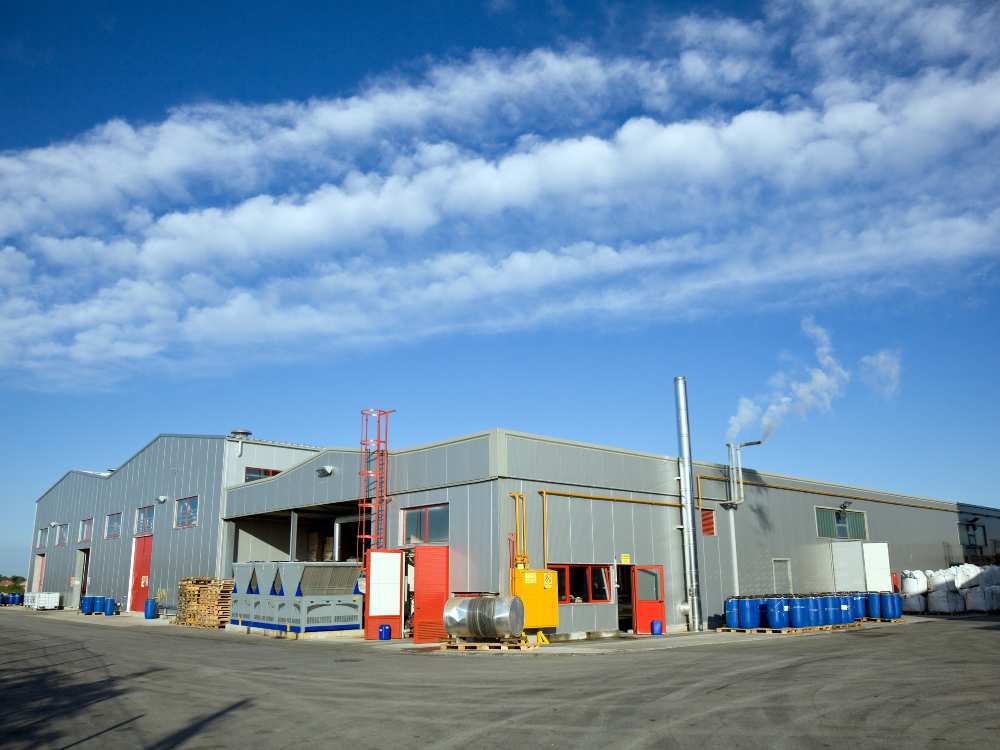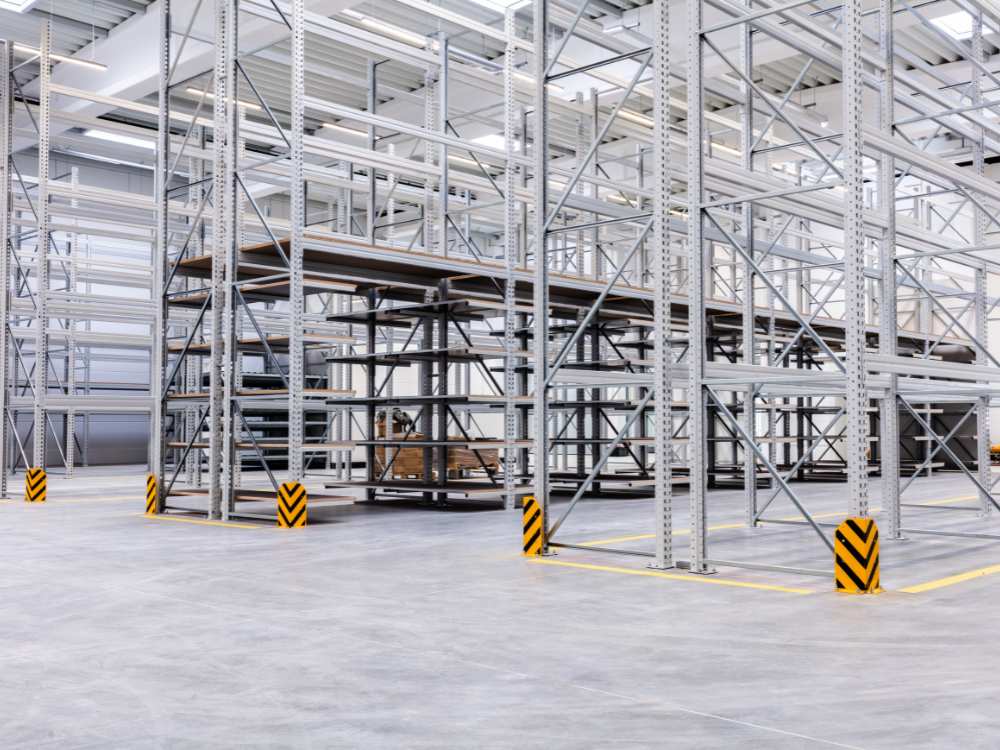SINCE 1988
203-546-7793

An income-generating industrial property is a type of real estate that produces consistent cash flow through long-term leases to tenants. As demand for warehousing and fulfillment centers continues to surge—fueled by e-commerce and reshaped supply chains—these properties have become some of the most resilient and profitable assets in today’s market.
Here are five reasons why now is the right time to consider this investment in Newtown, CT.
✔ Industrial real estate offers steady cash flow through long-term leases with reliable tenants.
✔ E-commerce growth is driving demand for distribution and warehouse space nationwide.
✔ Limited supply in key regions increases the value of existing industrial properties.
✔ Industrial assets often deliver strong ROI with lower operating costs than other property types.
✔ Flexible layouts and multi-use features make industrial buildings adaptable for future demand.
✔ Investors benefit from tax perks like depreciation, expense deductions, and 1031 exchanges.
✔ Evaluating industrial space for sale requires careful analysis of structure, location, and compliance.
Industrial properties often attract tenants who sign multi-year leases, offering investors stable and predictable income. These tenants include logistics companies, manufacturers, and storage providers who need reliable, long-term space to operate. As a result, those who invest in industrial space for sale often see consistent monthly returns with fewer turnover concerns.
The rise of online shopping has created a surge in demand for distribution centers and warehouse space. Companies now need to store inventory closer to major population hubs to meet fast delivery expectations. This shift has made industrial space for sale more valuable than ever to investors looking for strong, long-term demand.

While demand for industrial real estate keeps rising, new construction can’t keep up—especially in urban regions. Zoning restrictions, land costs, and lengthy approval processes all make it difficult to build new warehouses and distribution centers. For investors, this creates opportunities to buy into industrial space for sale that will likely grow in value over time.
Industrial real estate often delivers a higher return on investment compared to other commercial property types. With lower management costs, fewer vacancies, and durable tenant relationships, it offers attractive income potential. For those exploring industrial space for sale, the combination of stability and growth makes it a strategic asset choice.
Industrial properties are built to serve many purposes. This flexibility makes them easier to lease and more adaptable to future industry changes. Investors looking at industrial space for sale can feel confident knowing these assets can evolve with shifting tenant needs.
Industrial real estate includes any property used for manufacturing, storage, distribution, or other specialized functions, and choosing the right one isn’t just about price—it’s about purpose, location, and long-term profitability. Whether buying for rental income or future resale, investors need to dig deeper than surface details to make a smart decision.
Here’s a closer look at six key factors that can guide buyers toward the best industrial space:
Before browsing listings, investors should clarify how the property will be used—storage, manufacturing, tech, or logistics. Knowing the target tenant helps narrow down building size, ceiling height, dock access, and even power supply. Matching the property to a specific industry increases the odds of attracting stable, long-term tenants.
Industrial tenants rely on easy access to highways, ports, rail lines, or population centers. A property located in a distribution corridor or near a transportation hub is more likely to stay leased and command higher rent. Investors seeking industrial space for sale should evaluate traffic flow, drive times, and regional growth trends.
Older buildings may come with hidden costs, like outdated electrical systems, roof repairs, or environmental remediation. On the flip side, newer or recently renovated properties can offer better energy efficiency and fewer immediate repairs. A thorough inspection helps determine whether the asking price aligns with future maintenance needs.
Not all industrial properties are created equal—some have limited usage based on zoning laws. Local regulations can affect whether tenants can store chemicals, operate heavy machinery, or run 24-hour shifts. Buyers should always confirm permitted uses before purchasing industrial space for sale to avoid legal headaches.
Vacancy rates, rent growth, and average lease lengths vary by region and property type. Studying these metrics helps identify strong markets and avoid overpaying for weak locations. Local brokers or industrial property reports can provide critical insights to back up an investment decision.
Planned industrial parks, major tenant move-ins, or infrastructure upgrades can boost a property’s future value. But too much nearby inventory can increase vacancy risk and drive down rents. Smart investors research current and upcoming competition before locking in any industrial space for sale.

The industrial real estate market is projected to grow from $101.66 billion in 2024 to $108.6 billion in 2025 at a compound annual growth rate (CAGR) of 6.8%. This shows strong investor interest, however, not all industrial buildings offer the same investment value. While a property may look appealing on paper, a deeper evaluation is essential to determine whether it can truly generate income and grow in value over time.
Here are six factors investors should examine when considering an industrial space for sale:
Start by reviewing the roof, flooring, foundation, and overall construction quality. Cracks, leaks, or uneven flooring could lead to costly repairs and disrupt tenant operations. A solid structure reduces long-term maintenance costs and ensures the industrial space for sale remains functional for years.
Industrial tenants often need high ceilings for stacking inventory or installing large equipment. Properties with 24-foot clear height or higher are especially attractive to logistics and warehousing companies. Investors should also look for multiple loading docks, drive-in bays, and wide turning areas for trucks.
Electric load, gas lines, and water capacity must match tenant needs—especially for manufacturing or cold storage use. Some businesses require 3-phase power, heavy voltage, or large water intake. Knowing the limits of a property’s utilities helps avoid future upgrade costs after purchasing the industrial space for sale.
Adequate parking for employees and secure outdoor storage or trailer parking can add significant value. Poorly maintained asphalt, tight turns, or limited exterior space can turn off potential tenants. Investors should ensure the lot layout matches the flow of trucks, staff, and deliveries.
Evaluate how the building compares to similar properties in the same area in terms of square footage, features, and achievable rent. Understanding average lease rates helps estimate cash flow and calculate cap rate accurately. This is critical when judging the true earning potential of any industrial space for sale.
Properties used for heavy manufacturing, chemical storage, or transport may carry environmental concerns like soil contamination or groundwater impact. Investors should request Phase I Environmental Site Assessments and confirm the zoning allows for intended use. Ignoring this step could lead to legal liabilities or blocked occupancy.
Beyond steady income and long-term appreciation, industrial properties come with powerful tax advantages that can improve net returns. Investors who understand how to use these tools can reduce taxable income, defer capital gains, and reinvest profits strategically. Here are six distinct tax benefits to consider when evaluating any industrial space for sale:
Industrial buildings can be depreciated over 39 years, allowing owners to deduct a portion of the property’s value each year. This non-cash expense reduces taxable income, even if the asset is gaining market value. Investors often find that depreciation softens the impact of rental income on annual taxes.
Cost segregation studies break down a building into components like lighting, flooring, and HVAC systems. These parts can often be depreciated over 5, 7, or 15 years instead of the full 39 years. For those who recently purchased industrial space for sale, this approach can unlock larger deductions in the early years of ownership.
When an investor sells an industrial property and reinvests in a new industrial space for sale, a 1031 exchange can defer capital gains taxes. This allows profits to stay in play and compound through future deals. Following IRS timelines and rules is essential to complete a valid exchange.
Expenses tied to managing and maintaining the property—like insurance, property taxes, repairs, and management fees—are tax-deductible. These deductions directly reduce the taxable rental income generated by the asset. Keeping detailed records helps ensure every allowable write-off is claimed.
If the purchase of an industrial space for sale is financed, the interest on that loan is typically deductible. For leveraged investors, this can be a significant annual write-off, especially in the early years of the loan when interest makes up most of the payments. It’s a helpful tool for maximizing post-tax returns.
Recent tax laws have allowed for bonus depreciation, which lets investors immediately deduct a large portion of qualifying asset costs. Equipment, machinery, and some building improvements may qualify for 100% first-year deductions under this rule. This can create major tax savings in the year of purchase or renovation.
Class A industrial properties are modern, high-end buildings with top-tier features like 30-foot ceilings, advanced fire suppression systems, and proximity to major transportation routes. Class B properties are functional but older, often lacking some upgrades yet still in solid condition. Class C includes aging industrial space for sale with outdated layouts and limited features, often in less desirable locations.
In some cases, older industrial buildings can be converted into office lofts, creative studios, or even multi-use spaces—but this depends on zoning laws and local demand. Conversions can be expensive and require structural changes, permits, and market analysis. For investors exploring industrial space for sale, it’s important to check feasibility before considering adaptive reuse.
Yes, although industrial buildings typically require less intensive management than apartments or retail spaces. Tasks may include lease enforcement, maintenance coordination, and tenant communication. Professional oversight can help protect the value of an industrial space for sale and maintain consistent income.
Yes, some industrial sites carry environmental risks such as soil contamination or hazardous material storage. Due diligence—like a Phase I Environmental Site Assessment—is important before closing on any industrial space for sale. Failure to address these issues can lead to costly cleanup or legal liability.
Industrial properties are usually taxed at commercial rates, which vary by municipality and property type. Investors should factor local tax rates into their financial models when evaluating potential returns. Accurate tax forecasting helps determine whether a specific industrial space for sale will meet long-term income goals.
Tower Realty Corp helps investors and business owners find industrial space that fits both immediate needs and long-term goals. Based in Newtown, CT, our team brings deep market insight, honest guidance, and access to top-tier industrial space for sale. Whether seeking a distribution center, warehouse, or manufacturing site, Tower Realty Corp takes the guesswork out of the process and makes each step feel straightforward.
Contact us today for a consultation!